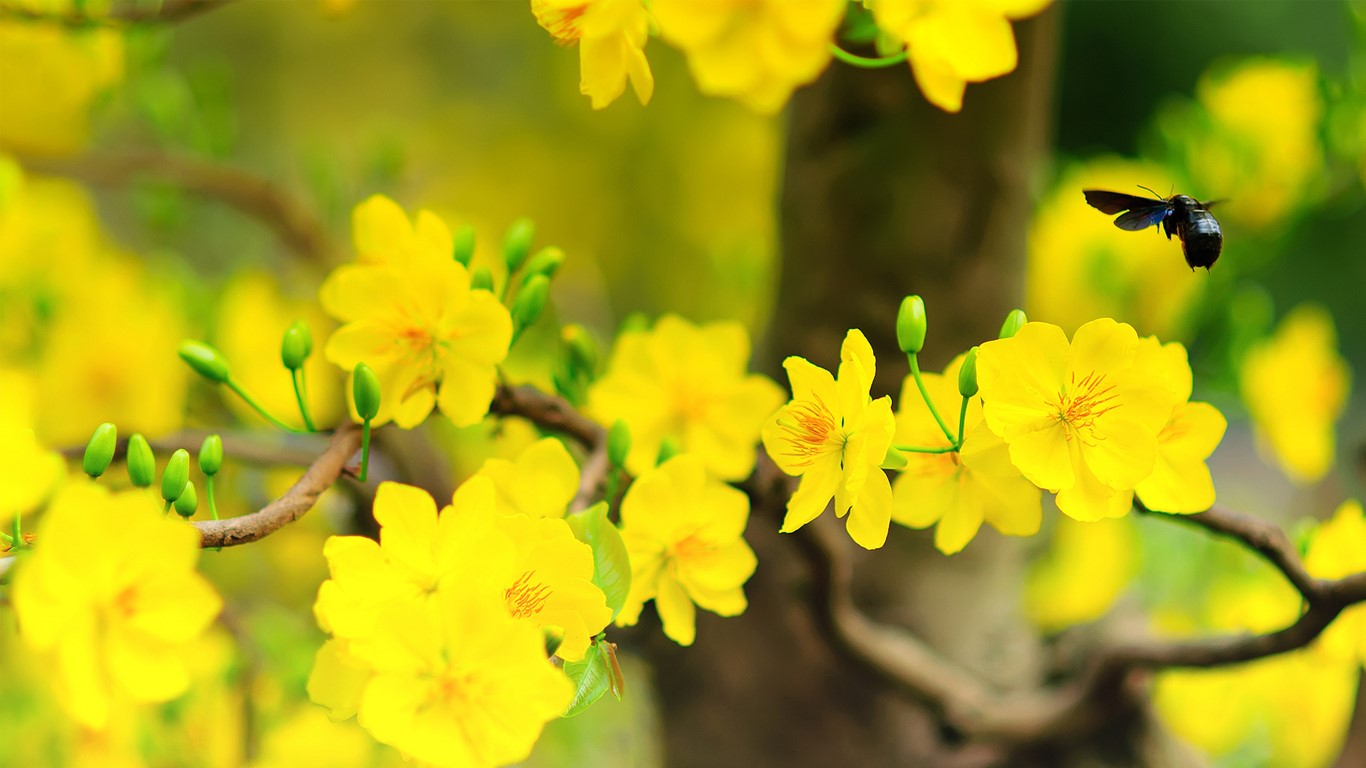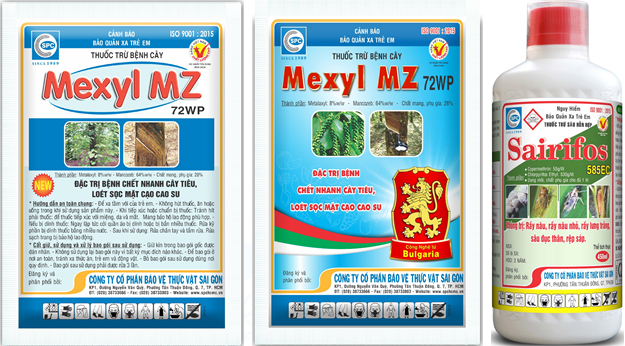|
Apricot growing technique
08/12/2021
BSc Do Huu Gia and MSc Huynh Kim Ngoc The apricot tree has long been associated with the Vietnamese people, especially in the South every spring. Plum symbolizes prosperity, happiness and good luck. The hobby of apricot has been known by many people, in order to have a beautiful apricot tree that blooms on New Year is Eve, beautiful flowers, and lasts a long time, it takes a year of very careful care, to create a beautiful apricot tree shape, it sometimes takes 3 to 5 years to become successful Apricot is a light-loving plant, likes sunshine all day, in sunny places, apricot trees will give more flower buds. The suitable temperature for apricot development is from 23-30 degrees Celsius. Apricot tree requires a lot of water but does not tolerate waterlogging, if it is flooded for many days, it is easy to rot its roots. When the tree has buds, if there is a shortage of water for a few days, then watering the tree again will lose its leaves and flowers bloom early, this is a factor to pay attention to to help flowers bloom on Tet holiday. How to take care of apricot tree: 1. Watering: In order for apricot trees to bloom in time for Tet, watering is a very important factor. Each locality, each region has a rainy season and a dry season that changes, and the irrigation water must also change accordingly. - Potted plants: watered twice a day in the dry season, once a day in the rainy season. - Land crops: in the dry season, watered 1 to 2 times a day, in the rainy season, it can be watered once every 1-2 days. It should be noted that in both cases when the rainy season is about to end, it must be heavily watered every day until December of the lunar calendar to gradually reduce the amount of water for irrigation: once every 2 days to prepare to pick apricot leaves. 2. Prevention of pests and diseases: Pests: - Stem borer is the type of worm that causes the most damage to trees, lack of observation, branches of apricot tree are easy to die or the whole tree dies .The best preventive measure is to broadcast Sargent 6G every 6 months. - Aphids: aphids of all kinds, such as flower hoppers, mealybugs... sucking sap causes leaves yellow twisted leaves and branches to die . It should be noted that aphids and aphids are also viral pathogens. If the population is small, Sairifos 585EC can be sprayed twice a week at the indicated dose. If aphids are too much, mix Sairifos 585EC + mineral oil SK 99EC sprayed twice a week, observe if the hoppers are dry or dead, stop. In addition, there are a number of insecticides for hoppers ,aphids, and thrips that are quite effective, such as Sapen alpha 5EC, Sec Saigon 25EC. - Other leaf-eating pests such as diamond back moth, sows... Spray insecticides such as Sherzol 205EC, SK Enspray 99EC... every 10 days. Diseases: - Pink fungal disease is quite dangerous for the tree, the fungus clings to the leaves, burns the leaves, and dries the branches. Saizole 5SC can be used to thoroughly wet the foliage 2 times, 5-7 days apart, when early disease appears. - For fungi that burn apricot leaves, it is recommended to use Mexyl MZ 72WP, Alpine 80WG sprayed according to the guided dose twice 5-7 days apart. - With symptoms of physiological diseases caused by micronutrient deficiency such as Bo, Mo, Fe, Mg, Mn... Foliar fertilizers such as Tano 601, Tano 606, Polyfeed 19-19-19 can be used to supplement nutrients for tree. 3. Cultivation combined with weeding: In the rainy season 45 days/time to create ventilation for the tree. How to make apricot trees bloom in time for Tet To have apricot trees bloom on New Year is Eve, on the morning of the first day of the New Year by taking care of ourselves, there is nothing more interesting. The following key points should be noted: a. Fertilize at the right time, with the right type. b. Watering at the right time: water evenly at the end of the rainy season to the Lunar New Year according to the instructions, if by mid-October - November sets of green leaves are the best, if the leaves have turned yellow, the flowers bloom sporadically and need to be braked. by increasing irrigation water with a little urea so that the plant can grow leaves and slow down the flowering process. c. See buds: By the full moon of the 8th month of the lunar calendar, apricot trees have young buds, if they see few buds, they need to increase their fertilization with one more time of NPK fertilizer 15-30-15 100gr/root to have more buds d. Pick leaves: Normally, we prune leaves on the full moon of December, but it can be picked early or late, depending on the health of the tree ( pick leaves early with healthy plants, weaker plants will be done later), and the weather (pick leaves early in the cold weather . early, hot weather later). |
To prevent, in addition to plowing and burying weed seeds, collecting weed stalks and stumps left after tilling the land to burn, not letting weeds produce seeds in production fields, etc., the use of chemical products is still a measure. optimal because of its ability to thoroughly kill weeds, reduce labor and take advantage of more time than manual weeding.
Miner has the scientific name Phyllocnistis citrella Staint., family Phyllocnistidae, order Lepidoptera. The miner occurs in many countries in the tropics and subtropics. The main host of the miner is the citrus family - Rutaceae. In addition, the miner also attacks mangosteen and some other plants.
Adult is a small planthopper, with a body 2-3 mm long, the whole body is ash gray, slightly greenish, the wings are opaque with many small brown spots.Eggs are oval, 0.3 mm long, have a pointed end and are attached directly to the leaf surface, leaf axils.
Green bugs specialize in the fruit of citrus groups (oranges, tangerines, lemons, grapefruits, kumquats...), some people call them orange bugs, or orange suckers. Their scientific name is Rhynchocoris poseidon or Rhynchocoris humeralis.
In Vietnam, yellow leaf curl disease is very common on papaya trees, especially the disease is often severe in areas of high and continuous planting, areas with hot and arid climates. The disease has significantly reduced the yield and quality of papaya. Gardens that are infected early when the plants are young may not yield. However, up to now, many gardeners still do not know the cause and how to fix it.
Spider mites are common pests on citrus trees, especially in hot and dry climates that are suitable for spiders to grow and cause severe damage.The group of harmful spiders is usually very small in size, unlike the natural enemy spiders.
This group includes species that are generally very small in size, causing damage by sucking plant sap (on leaves, fruits, branches, stems).
There are many species of mealybugs present on the group of Oranges,Tangerines,Grapefruits and Lemons (Citrus), which can be divided into 2 groups:
+ Group of sticky mealybugs with common varieties such as Lepidosaphes, Aonidiella, Coccus and Saissetia.
+ Group of flower mealybugs with common genera and species such as Pseudococcus, Planococcus and Icerya purchasi.
Dry branches and berries disease often appear to be common damage on coffee gardens during the rainy season. The disease causes death of branchs, dry fruit, severely affects the canopy structure and coffee yield if not paid attention to prevention.
Pink disease commonly causes diseases on rubber plantations in the rainy season, especially on garden from 4-8 years old. This year, rubber has to go through a period of severe drought, weakening the tree, so now in tnshe rainy season it is easy to get infected. Therefore, it is necessary to pay attention to good management to avoid affecting the garden.
In recent years, the area of citrus has been expanded because it is a fruit tree with high economic efficiency. However, in order to sell at a high price, not only in quality but consumers also require the external beauty of the fruit, so pest management on citrus is a matter of great concern to farmers. The hot season is a favorable condition for thrips to develop and cause damage, affecting the commercial value of fruit.
- Headquarters
- SAIGON PLANT PROTECTION JOINT STOCK COMPANY
- RQ 1, Nguyen Van Quy St., Tan Thuan Ward, HCM City
- Tax code: 0300632232
- Tel: (028) 38 733 295 - 38 732 077
- Fax: (028) 38 733 003 - 38 733 391
- Website: www.spchcmc.vn - Email: info@spchcmc.vn
- SAIGON PLANT PROTECTION COMPANY
- SAIGON PLANT PROTECTION JOINT STOCK ENTERPRISE
- Lot C1-C3 Hiep Phuoc Industrial Park, Hiep Phuoc Commune, HCM City
- Tel: (028) 3873 4089 - Fax: (028) 3873 4086
- Affiliated Unit
-
- Quick Links
- Home
- About us
- Career Opportunities














